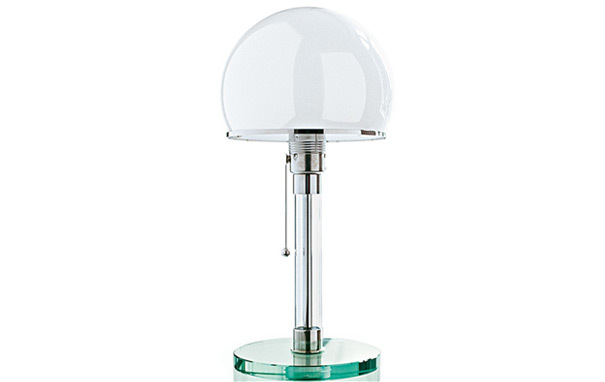Wilhelm Wagenfeld
15 April 1900 - 28 May 1990
In 1923 Wagenfeld joined the Bauhaus school in Weimar, Germany and worked in the metal workshop under the tutelage of László Moholy-Nagy, the famous Hungarian Bauhaus professor. He remained at the Bauhaus Weimar until 1935. In 1924 he created the legendary Bauhaus table lamp (in collaboration with K. J. Juncker), known as the Wagenfeld Lampe, which is still considered the embodiment of Bauhaus design today with it’s timeless design and instantly recognisable form; a true Bauhaus classic.
A pioneer of industrial design, Wilhelm Wagenfeld is regarded as one of the most important and influential German product designers of the 1950s and 1960s. Unlike the majority of Bauhaus designers, Wagenfeld achieved widespread recognition for his iconic designs. He received the Grand Prix at the Milan Trienale in 1957 and the Bundespreis Gute Form in 1969 and 1982.
In addition to this, the city of Bremen in Germany has honoured him with his own museum, the Wilhelm Wagenfeld Haus, and his designs are found in numerous museums including the Museum of Modern Art in New York and the V&A in London.
Although Wagenfeld produced a range of designs, from household objects such as dinnerware, tea sets and vases, his most enduring and iconic works were the various lights he designed in glass and steel; from the Lindner-produced wall light (WV 343) to the instantly recognisable Wagenfeld Table Lamp (WG 24) with it’s translucent shade and transparent glass stem and base.
Walter Gropius, the founder of the Bauhaus school, described Wagenfeld’s work as a consistent application of the ideas of the Bauhaus ethos with his emphasis on socially responsible work and adherence to the Bauhaus philosophy of ‘form follows function’.
Wagenfeld’s ‘everyday’ product designs are characterised by their functionalism and understated beauty adhering as they do to the Bauhaus aesthetic.

